We treat cells with biologically active compounds and/or genetic perturbations and score them in models trained to identify age. This allows us to identify compounds or genes that change the cellular phenotype along the axes of aging.

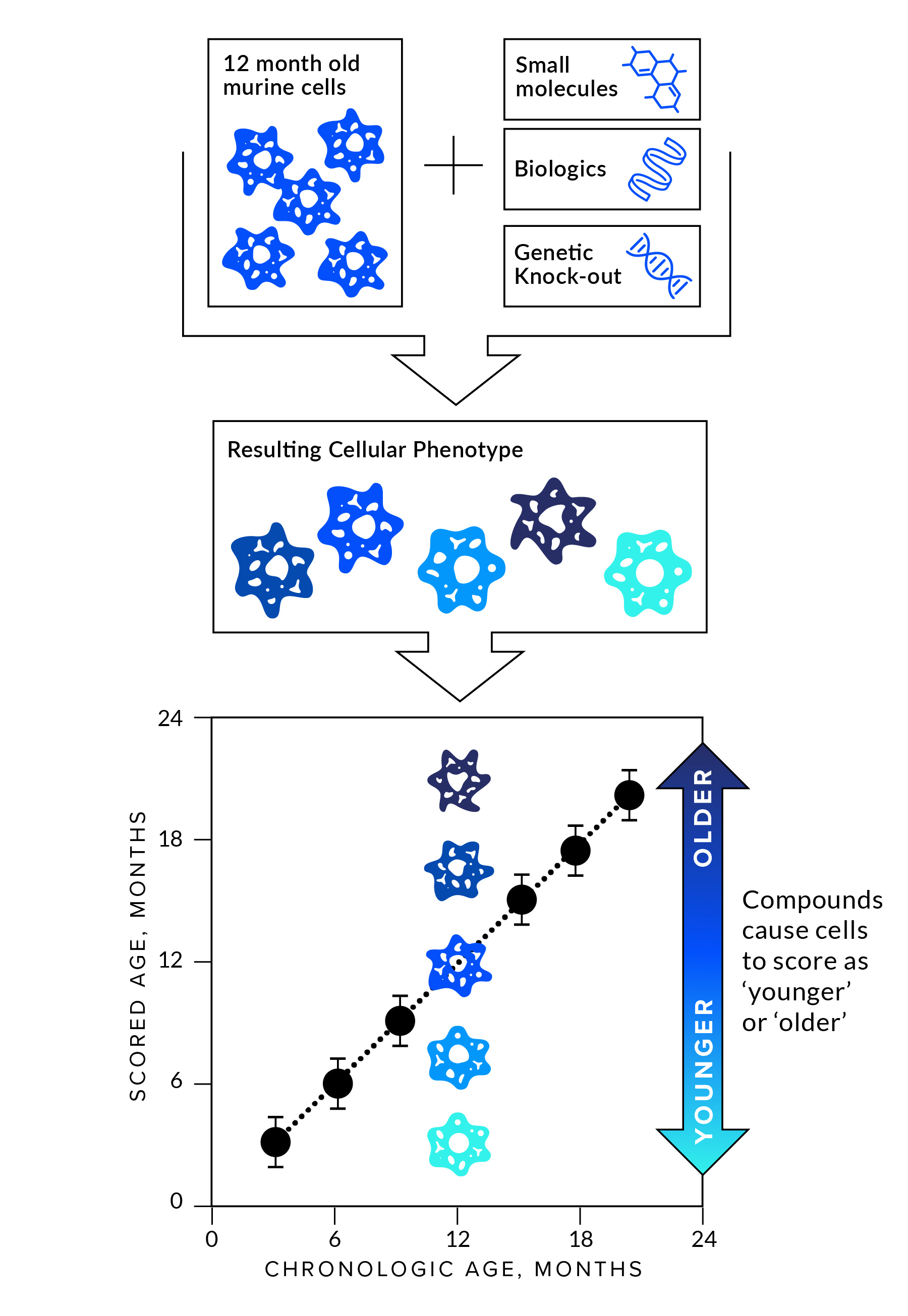
Our AI-driven platform identifies previously hidden cellular features to model cellular resilience with remarkable precision. This has enabled us to generate unprecedented insights into the cellular aging process. We have united science, engineering, and medicine to turn these insights and technologies into a powerful drug discovery and development engine for the treatment of age-related chronic degenerative diseases.
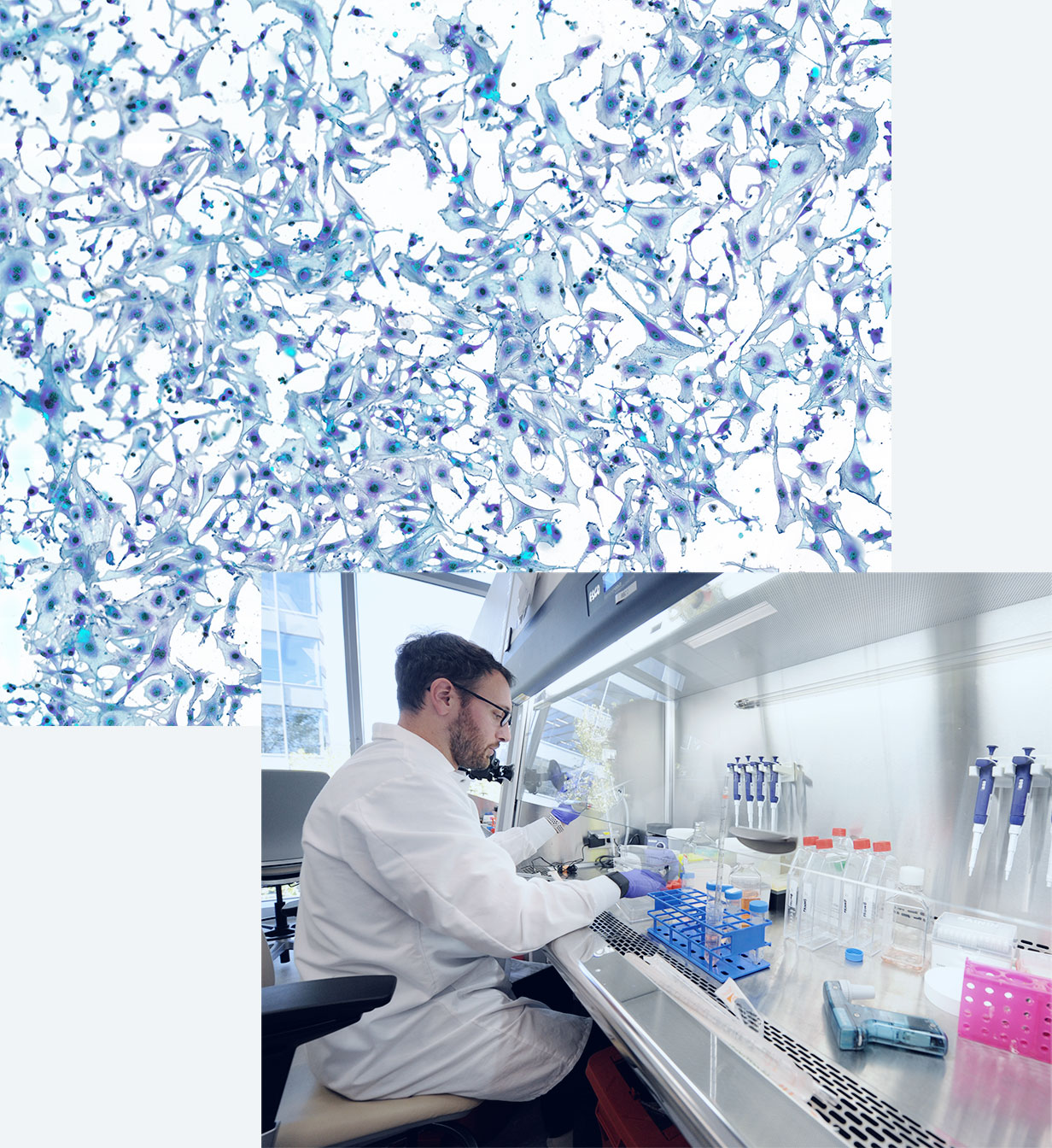
Our models produce powerful tools to quantify and score disease and age progression on a cellular level.
We start by using our proprietary system to isolate cells from donor tissue across a range of biologic conditions — age, stages of disease progression, etc.
We apply our assays — using a customized collection of markers, stains, and imaging technologies — to collect petabytes of high resolution, high dimensional image data that captures information on the in vivo biologic state of the donor in the form of cell phenotypic-based signals.
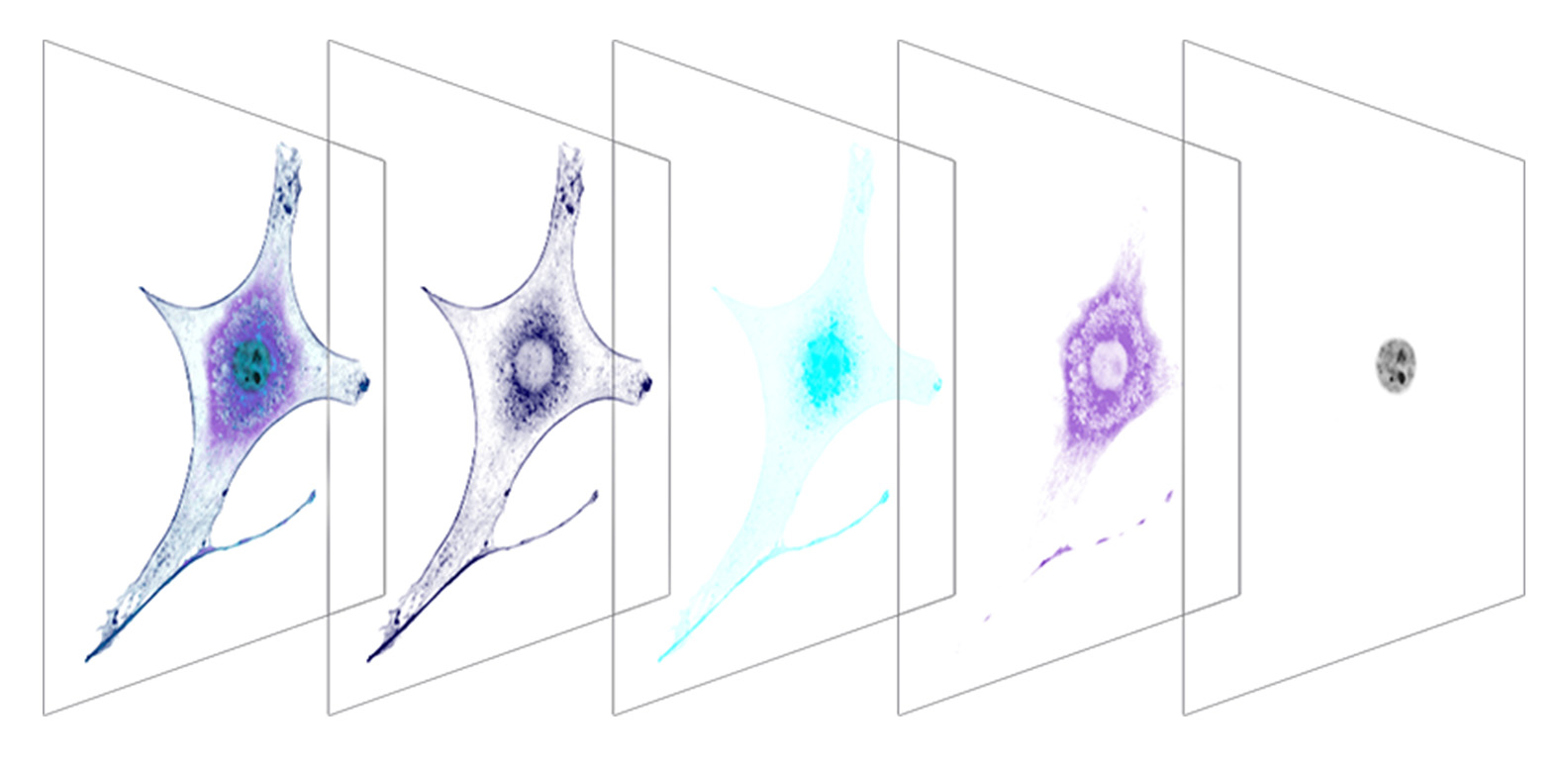
We employ two technologies – embeddings and phenotypic models – designed specifically for the uniqueness of biological data and to address therapeutic questions.
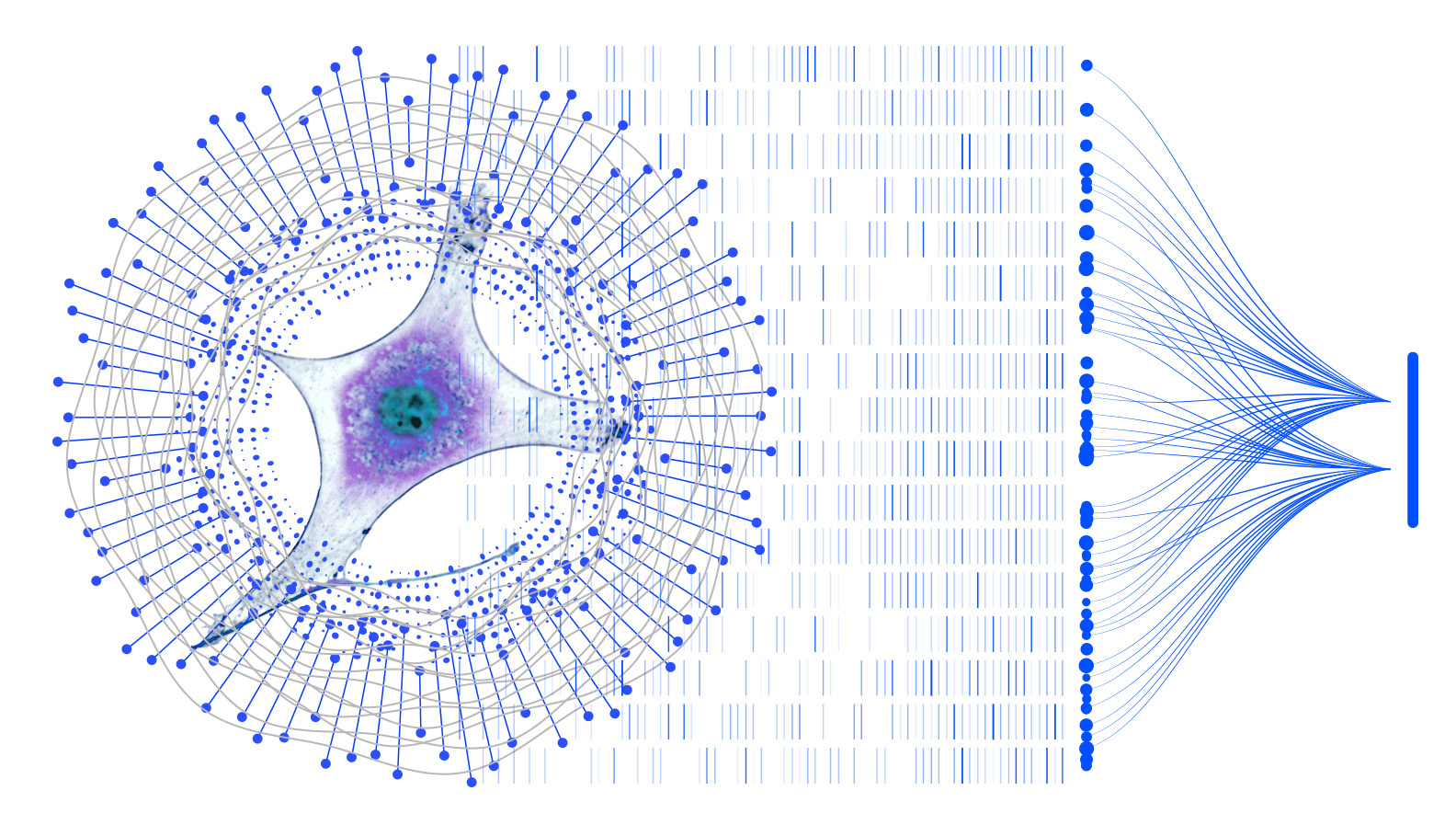
Our trainable phenotypic screening platform identifies drug-like molecules and potential targets that have disease modifying activity for age-related degenerative diseases.
We leverage our embedding and modeling technologies to score genetic, chemical, and biologic qualities that contribute to disease and age progression. By utilizing our optimized process to limit cell handling and manipulation, we are able to test cells in a disease state rather than an induced model.
We introduce various perturbations, such as molecules or genetic modifications, into our platform to identify molecular and/or pathway changes that modulate cellular resilience. Molecules found to reduce or reverse cellular aging are further analyzed through our AI models in conjunction with ‘omics data, such as RNAseq, to determine mechanisms of action and targets. In parallel, these molecules are further screened in vivo in age-related models.
We treat cells with biologically active compounds and/or genetic perturbations and score them in models trained to identify age. This allows us to identify compounds or genes that change the cellular phenotype along the axes of aging.


Compounds and targets found to improve cellular aging in vitro are then tested in aging models in vivo. In vivo, we identify compounds and pathways that slow the progression of age-related decline or disease.
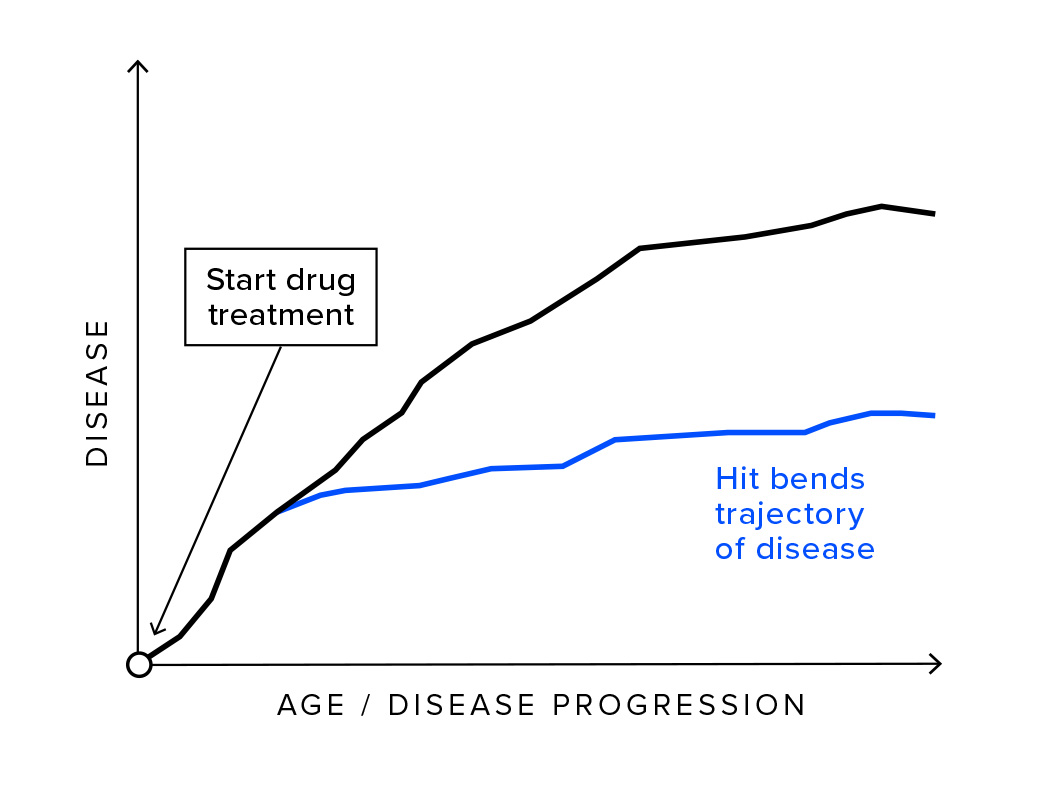
Our lead molecules are optimized and tested in disease-relevant in vitro and in vivo models for drug candidate selection. Through these analyses, we score the molecules for their ability to modify the trajectory of disease progression.
View a case study of FTX005778 for age-associated lipodystrophy and diet-induced central obesity.
Our screening platform has identified several novel therapeutic effects that fall into two classes: novel therapeutic activity of a previously studied compound or target; and novel chemicals or targets for which no biologic/therapeutic activity had previously been identified.
